Leading organisations deliver engineering excellence through systems that are performant, scalable, and ready for future demands. Model-Based Systems Engineering (MBSE) enables efficient design, rigorous verification, and end-to-end traceability. Applying SysML within Sparx Systems Enterprise Architect (EA) aligns development, shortens delivery cycles, and strengthens collaboration across aerospace, defence, and automotive sectors.
Why MBSE and SysML?
MBSE replaces fragmented, document-driven practices with a connected, model-centric approach. SysML implements MBSE by enabling engineers to represent system structure, behavior, interactions, and requirements within a single unified model. This approach enhances clarity, reduces errors, simplifies complexity management, and fosters seamless collaboration across teams.
Why select Enterprise Architect for MBSE?
Sparx Systems Enterprise Architect covers the complete MBSE lifecycle – from requirements capture to architectural validation and simulation.
Key capabilities:
• Comprehensive SysML support: Full SysML coverage (including a SysMLv2 modelling environment).
• Integrated requirements management: Capture, trace, and validate requirements directly in the model, or federate with external tools such as IBM DOORS NG, Jira, and Jama.
• Automated document generation: Produce consistent, high-quality reports and system documentation directly from models.
• Collaboration via Prolaborate: Share models with business stakeholders, collect real-time feedback, and track input across parties.
• Version control enablement: Use EA’s built-in version management to guide controlled model evolution.
From requirements to behaviour: end-to-end MBSE modelling
Specification modelling:
Requirements
A robust MBSE approach starts with capturing and governing system requirements. With SysML Requirement Diagrams, teams can:
- Structure high-level and detailed requirements hierarchically.
- Distinguish requirements by attributes such as status (proposed, approved, etc.) using visual colour cues.
- Import requirements from sources like Jira, Jama, IBM DOORS, or Polarion to centralise data within EA.
Requirements are first-class citizens – they drive the downstream modelling flow.
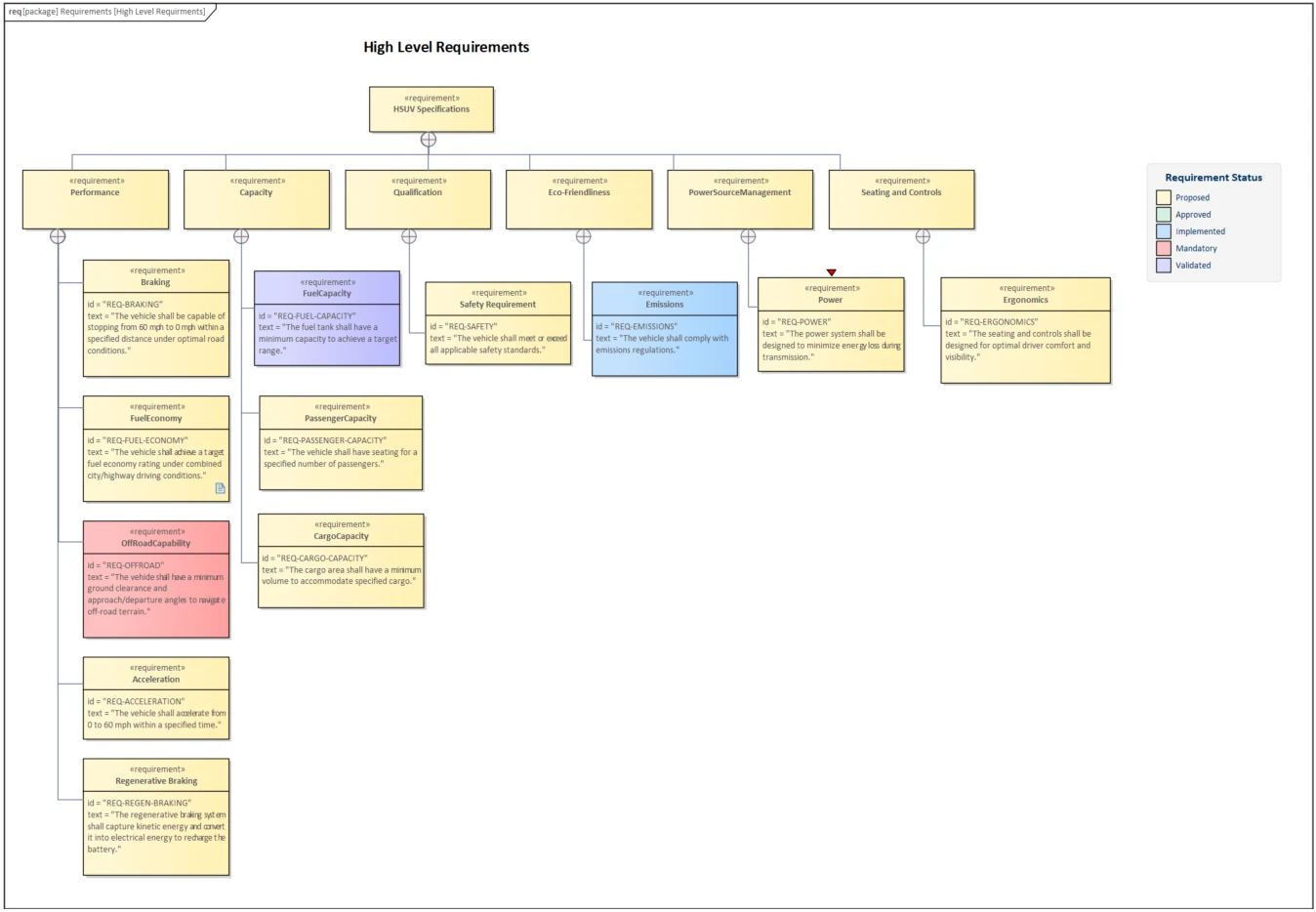
Requirement Diagram in Sparx EA
Use Case
After requirements are defined, Use Case Diagrams map them to functional scenarios:
- Provide a top-level view of system functionality and interactions with external actors (users, other systems).
- Describe step-by-step scenarios, including alternative and exception paths.
- Specify pre- and postconditions to clarify behavioural expectations.
- Generate Activity Diagrams directly from use cases to visualise behavioural flows.
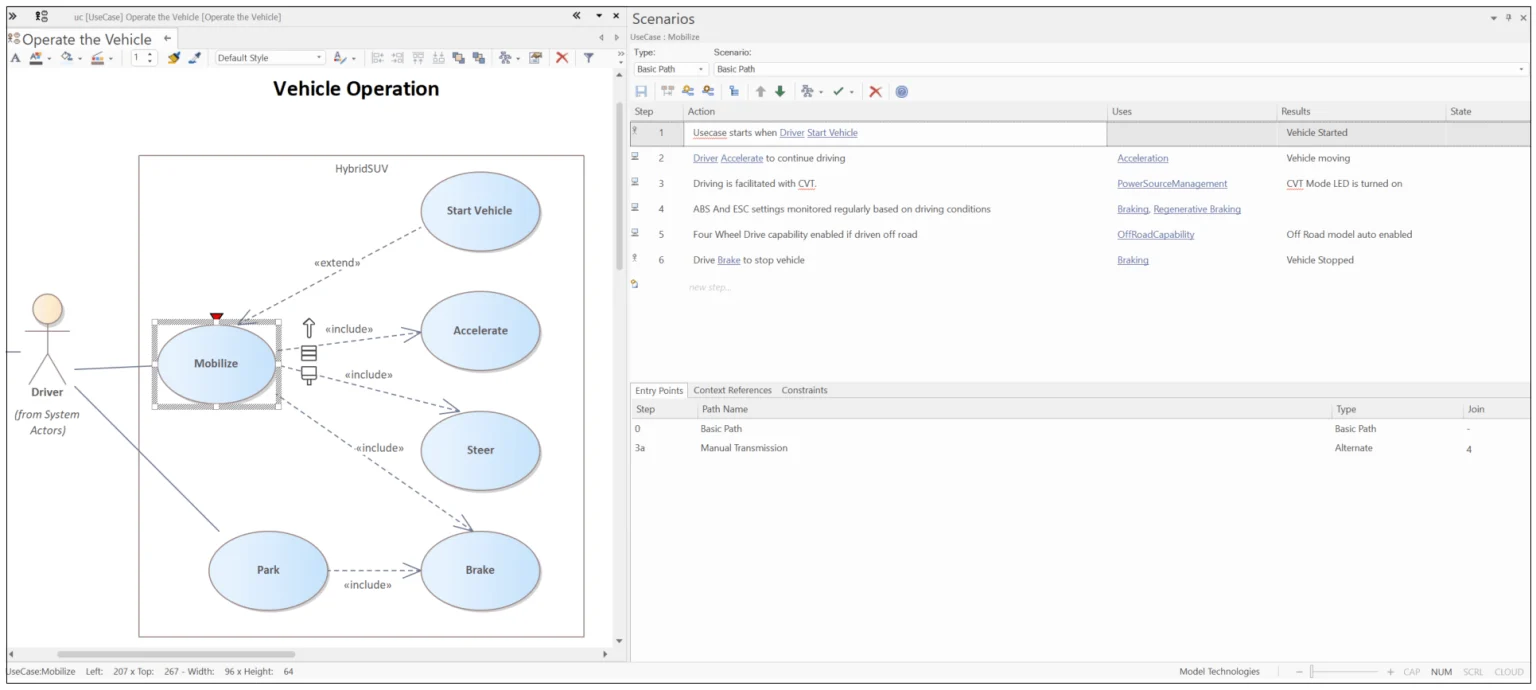
Use Case Diagram in Sparx EA
Structural modelling:
Block definition
- Specifies system components and subsystems, including properties, operations, and relationships.
- Presents a high-level architectural view showing how blocks relate.
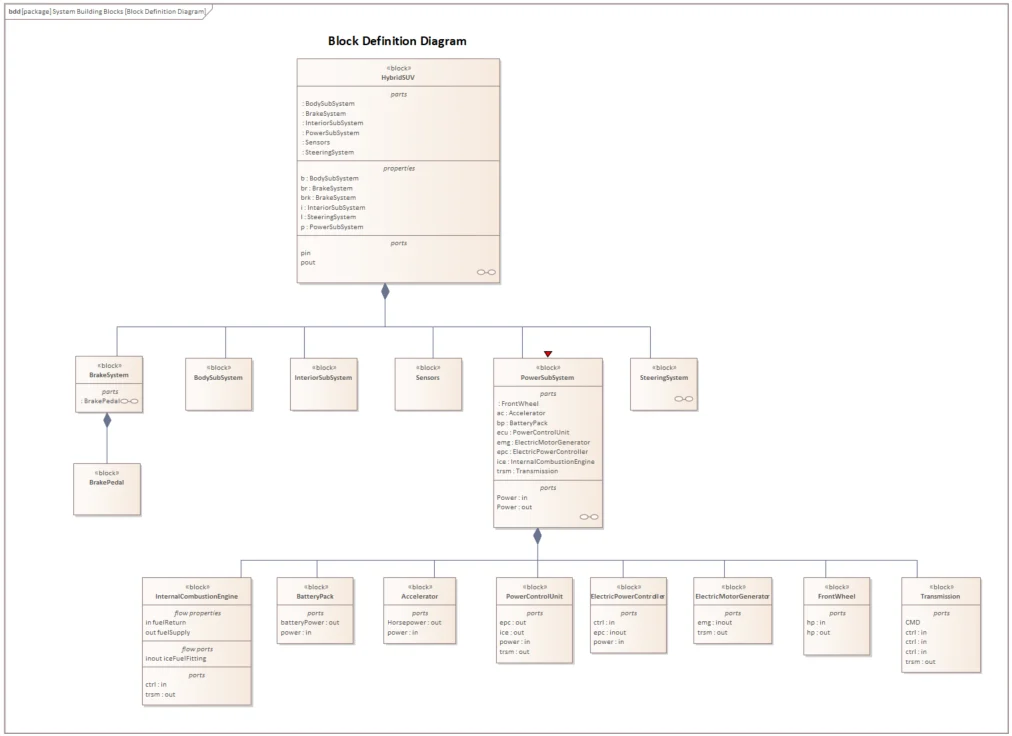
Block Definition Diagram in Sparx EA
Internal Block Diagram
- Details the inner composition of blocks – parts, ports, and connectors.
- Visualises subcomponent interactions for deeper architectural insight.
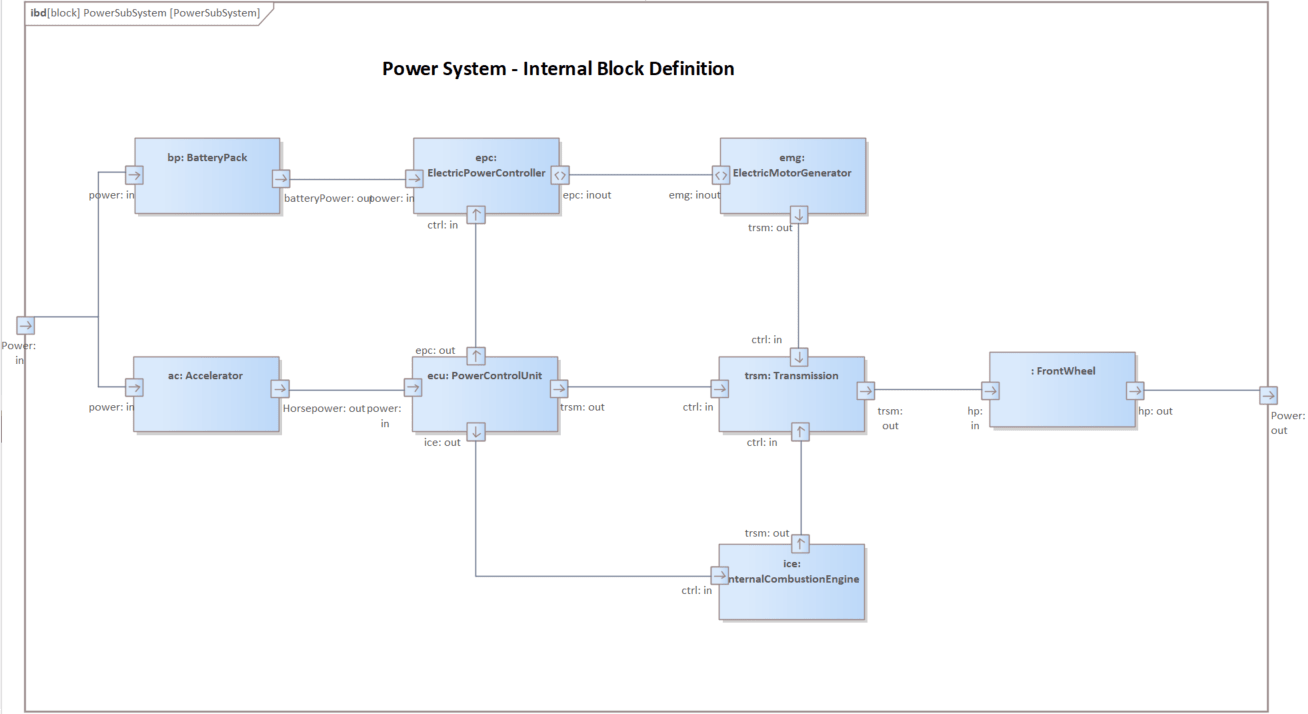
Internal Block Diagram in Sparx EA
Behavioural modelling:
Activity Diagram
- Represents system workflows and processes.
- Activities can be partitioned by actors or components.
- Supports drill-down into detailed flows for clear behavioural understanding.
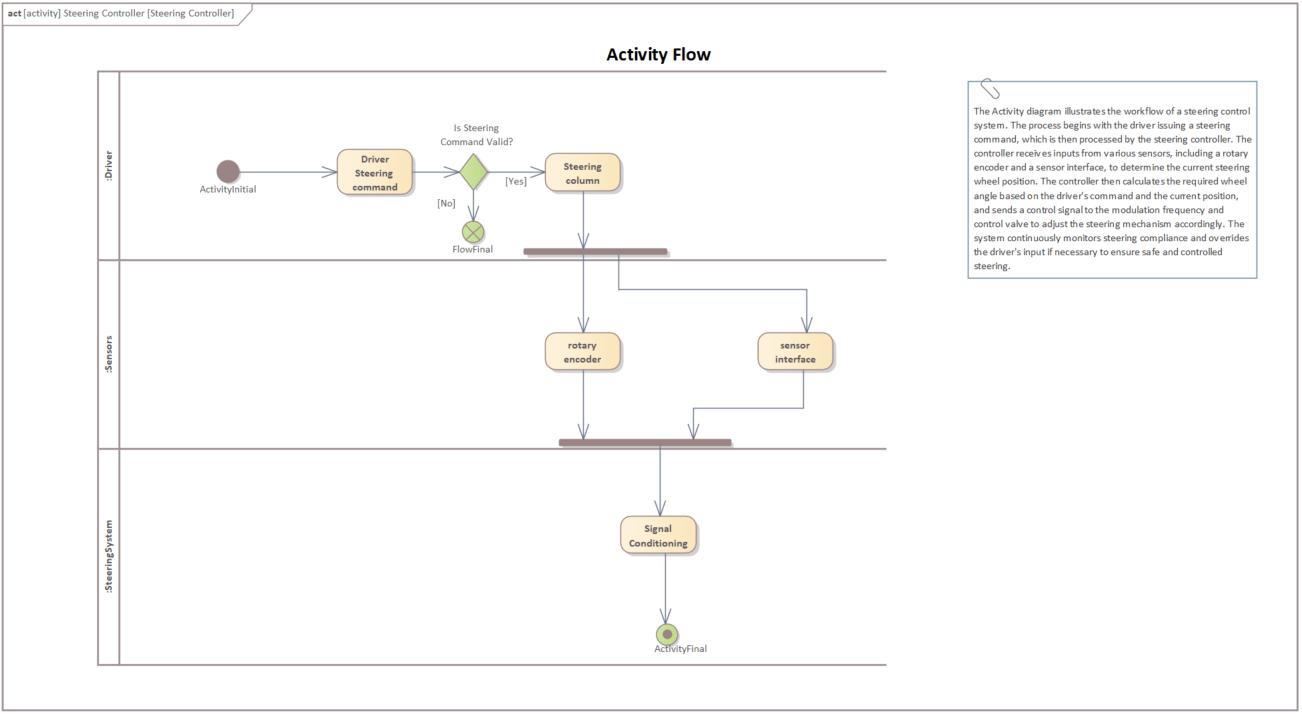
Activity Diagram in Sparx EA
Sequence Diagram
- Depicts time-ordered interactions among system elements.
- Captures message lifecycles, loops, alternatives, and parallel paths.
- Confirms dynamic behaviour and communication sequencing between components.
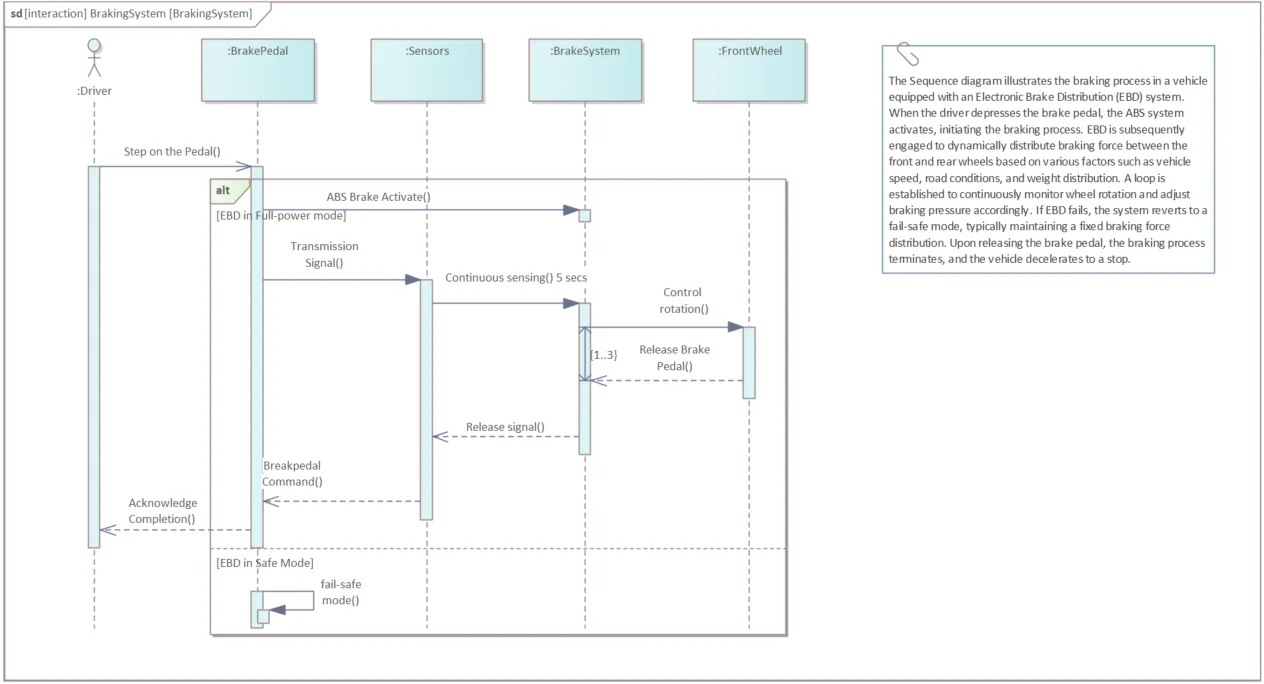
Sequence Diagram in Sparx EA
State Machine
- Models states and transitions for systems or components in response to events or triggers.
- Defines behaviours such as entry, exit, and internal actions.
- Supports simulation of state transitions in EA to visualise behaviour under varying conditions.
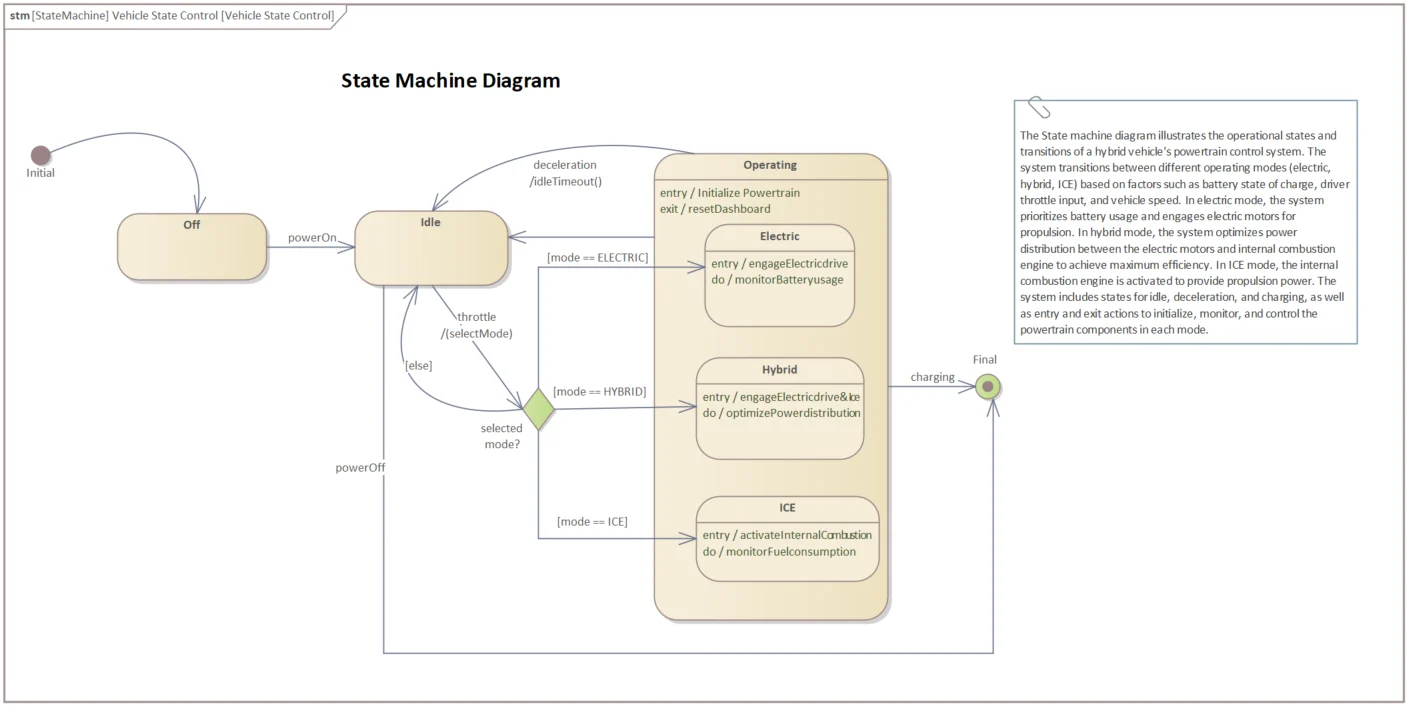
State Machine Diagram in Sparx EA
End-to-End traceability
MBSE diagrams are interconnected to create a cohesive model:
- Requirements traceability: Requirements are elaborated through use cases, verified by test cases, and satisfied by system blocks that encapsulate behavioural diagrams as composites.
- Ensures full visibility from requirements capture to realised behaviour, enabling impact analysis and informed decisions.
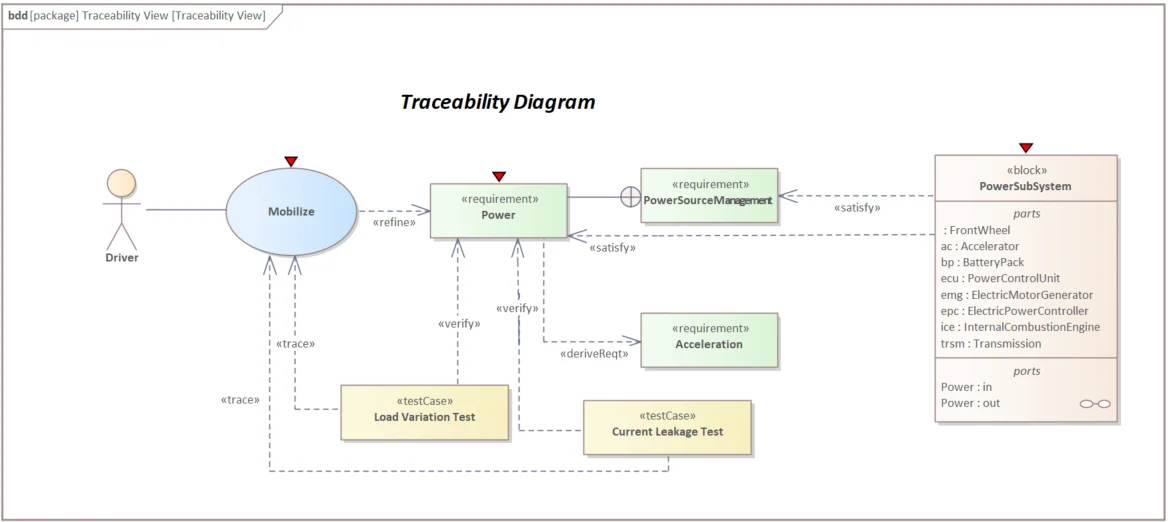
Traceability in Sparx EA
Conclusion
Model-Based Systems Engineering with SysML in Enterprise Architect equips organisations to design, verify, and deliver complex systems efficiently. A model-centric approach reduces risk, raises quality, and accelerates time-to-market. EA offers a comprehensive, cost-effective platform to support the MBSE journey from concept through delivery.

